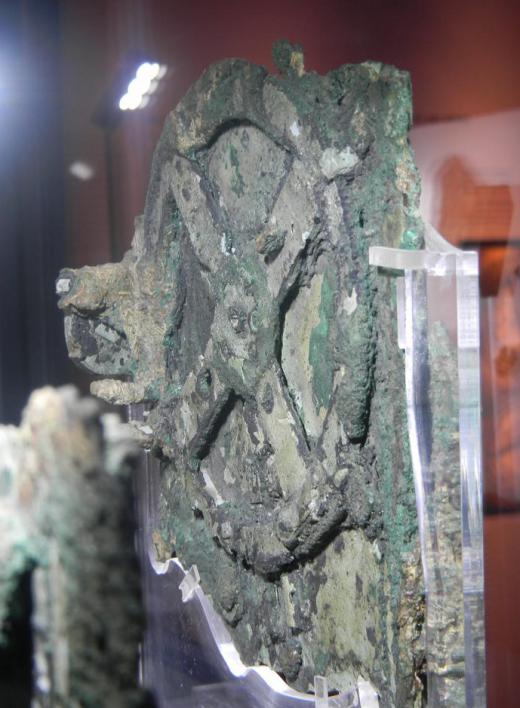What is the Antikythera Mechanism?
 Michael Anissimov
Michael Anissimov
The Antikythera mechanism is an ancient (150–100 BC) complex scientific calculator, often called the first mechanical computer. Crafted of bronze, the Antikythera mechanism has over 30 gears, interlocked with teeth made of equilateral triangles. Its served as a clock that included the present day of the 365-day Egyptian calendar, the Greek sign of the Zodiac, the lunar phase, a parapegma (used to show the positions of the stars), and the positions of the Sun and Moon. Contemporary investigators surmise that this information could have been used to determine other astronomical facts, such as the position of Mars and Venus.
Originally discovered at the Antikythera wreck, a shipwreck off the Greek island of Antikythera, between Kythera and Crete, the Antikythera mechanism is heavily corroded by the sea. It was discovered in 1901, and only after more than a century of research -- around 2006 -- did its function become well understood. The complexity of the device has been compared to that of a 18th century watch, and nothing like it appears in the archaeological record until the Islamic Golden Age about 1000 years later.

Investigators of the Antikythera mechanism have proposed that the ship likely sunk while on a trip from Rhodes, a major Greek island city, to Rome, the capital of the Roman Empire and the most important city in the world at the time. One hypothesis has suggested that the device may have been created at an academy founded by the Stoic philosopher Posidonius, which was known for its knowledge of astronomy and mechanical engineering. However, a more recent analysis (2008) suggests that the mechanism may have originated in Corinth, which would associate it with the famous inventor Archimedes.
Aside from the Antikythera mechanism, there are several mentions of devices of similar complexity found in ancient texts such as Cicero's 1th century BC De re publica, which describes elaborate planetariums and other mechanisms created by Archimedes, and other surviving texts from the Library of Alexandria, which corroborate the claims of Cicero. It is thought that Caius Sulpicius Gallus, a Roman consul, first brought knowledge of eclipses to Rome based on his possession and study of a sophisticated planetarium sometime around the year 129 BC.
AS FEATURED ON:
AS FEATURED ON:











Discuss this Article
Post your comments